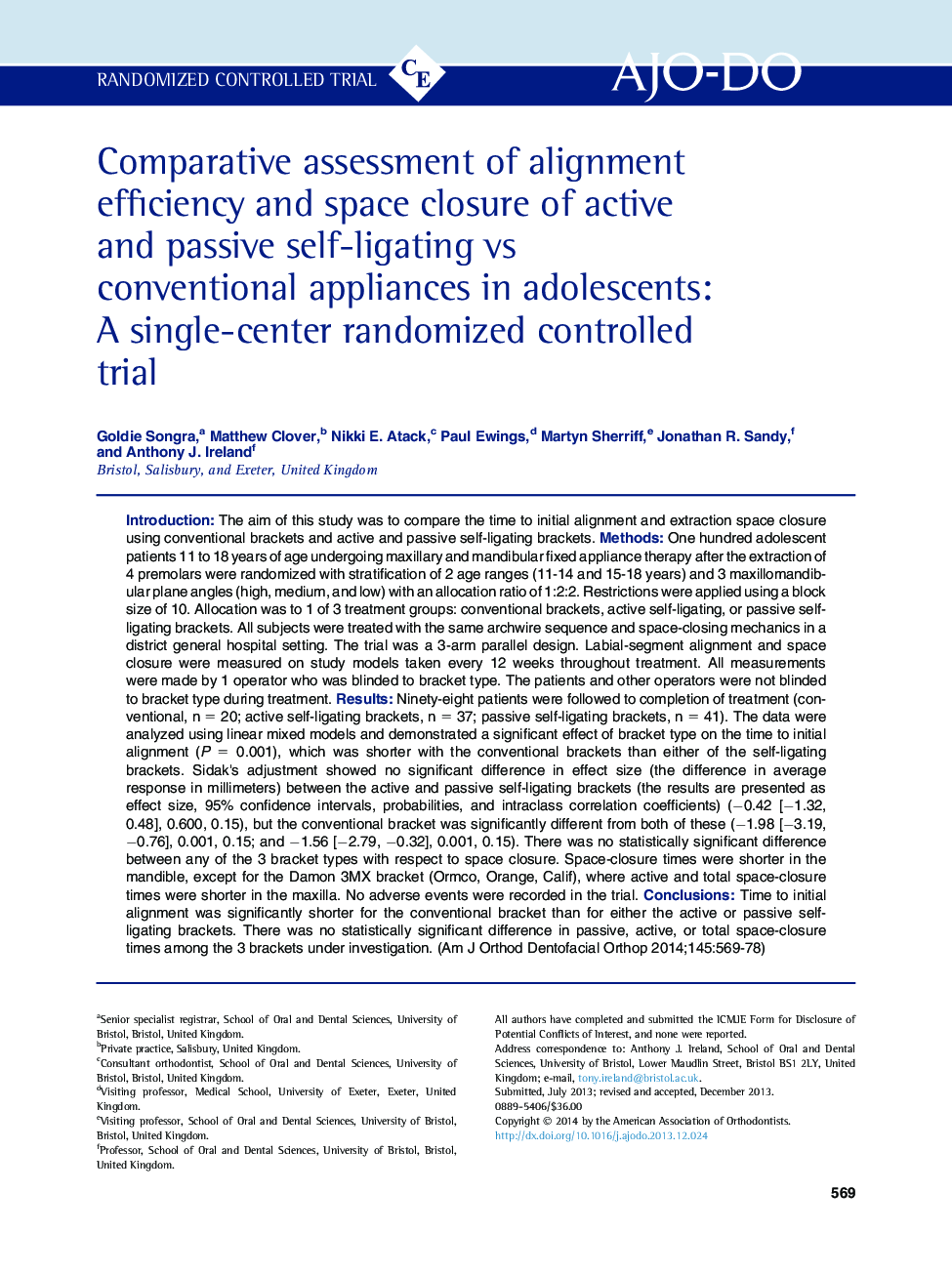| Article ID | Journal | Published Year | Pages | File Type |
|---|---|---|---|---|
| 3116273 | American Journal of Orthodontics and Dentofacial Orthopedics | 2014 | 10 Pages |
IntroductionThe aim of this study was to compare the time to initial alignment and extraction space closure using conventional brackets and active and passive self-ligating brackets.MethodsOne hundred adolescent patients 11 to 18 years of age undergoing maxillary and mandibular fixed appliance therapy after the extraction of 4 premolars were randomized with stratification of 2 age ranges (11-14 and 15-18 years) and 3 maxillomandibular plane angles (high, medium, and low) with an allocation ratio of 1:2:2. Restrictions were applied using a block size of 10. Allocation was to 1 of 3 treatment groups: conventional brackets, active self-ligating, or passive self-ligating brackets. All subjects were treated with the same archwire sequence and space-closing mechanics in a district general hospital setting. The trial was a 3-arm parallel design. Labial-segment alignment and space closure were measured on study models taken every 12 weeks throughout treatment. All measurements were made by 1 operator who was blinded to bracket type. The patients and other operators were not blinded to bracket type during treatment.ResultsNinety-eight patients were followed to completion of treatment (conventional, n = 20; active self-ligating brackets, n = 37; passive self-ligating brackets, n = 41). The data were analyzed using linear mixed models and demonstrated a significant effect of bracket type on the time to initial alignment (P = 0.001), which was shorter with the conventional brackets than either of the self-ligating brackets. Sidak's adjustment showed no significant difference in effect size (the difference in average response in millimeters) between the active and passive self-ligating brackets (the results are presented as effect size, 95% confidence intervals, probabilities, and intraclass correlation coefficients) (−0.42 [−1.32, 0.48], 0.600, 0.15), but the conventional bracket was significantly different from both of these (−1.98 [−3.19, −0.76], 0.001, 0.15; and −1.56 [−2.79, −0.32], 0.001, 0.15). There was no statistically significant difference between any of the 3 bracket types with respect to space closure. Space-closure times were shorter in the mandible, except for the Damon 3MX bracket (Ormco, Orange, Calif), where active and total space-closure times were shorter in the maxilla. No adverse events were recorded in the trial.ConclusionsTime to initial alignment was significantly shorter for the conventional bracket than for either the active or passive self-ligating brackets. There was no statistically significant difference in passive, active, or total space-closure times among the 3 brackets under investigation.
